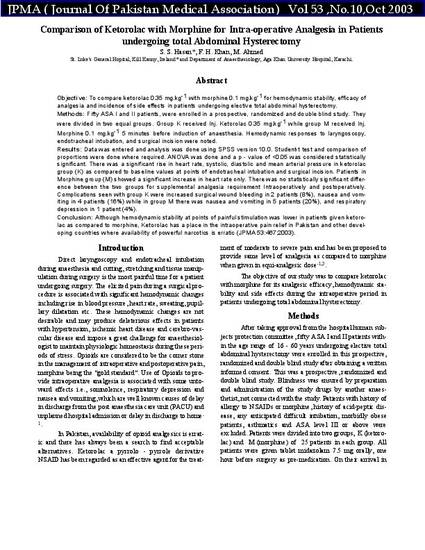
Direct laryngoscopy and endotracheal intubation during anaesthesia and cutting, stretching and tissue manipulation during surgery is the most painful time for a patient undergoing surgery. The elicited pain during a surgical procedure is associated with significant hemodynamic changes including rise in blood pressure, heart rate, sweating, pupillary dilatation etc. These hemodynamic changes are not desirable and may produce deleterious effects in patients with hypertension, ischemic heart disease and cerebro-vascular disease and impose a great challenge for anaesthesiologist to maintain physiologic homeostasis during these periods of stress. Opioids are considered to be the corner stone in the management of intraoperative and postoperative pain, morphine being the "gold standard". Use of Opioids to provide intraoperative analgesia is associated with some untoward effects i.e., somnolence, respiratory depression and nausea and vomiting, which are well known causes of delay in discharge from the post anaesthesia care unit (PACU) and unplanned hospital admission or delay in discharge to home-1.
Available at: http://works.bepress.com/fazal_hameed/8/